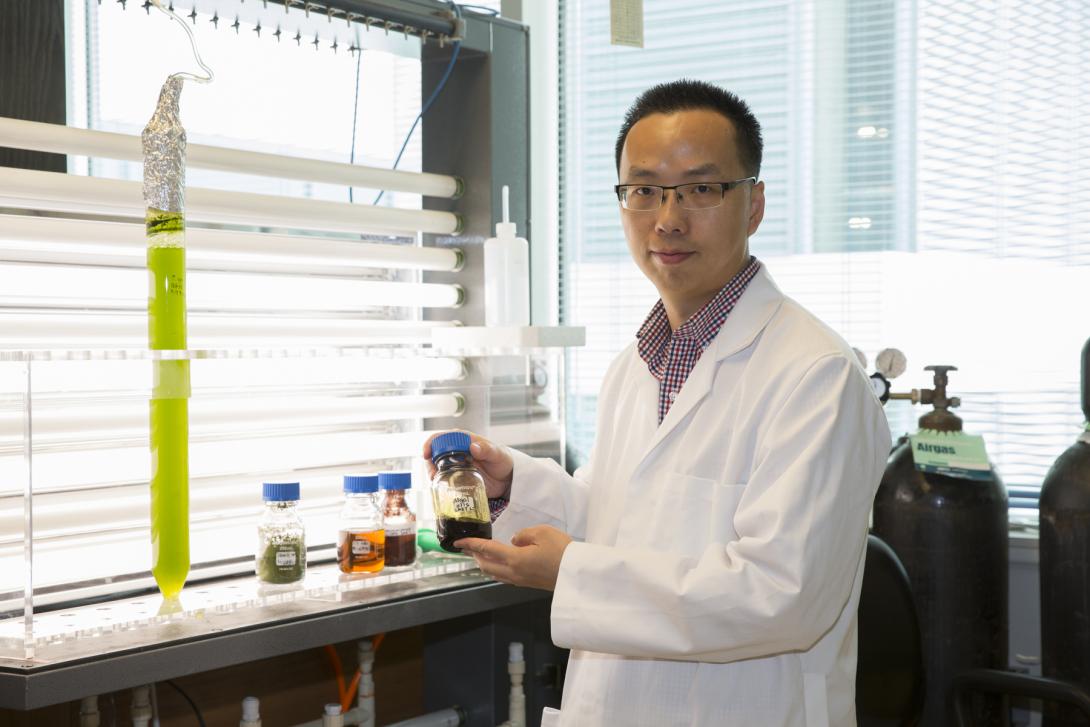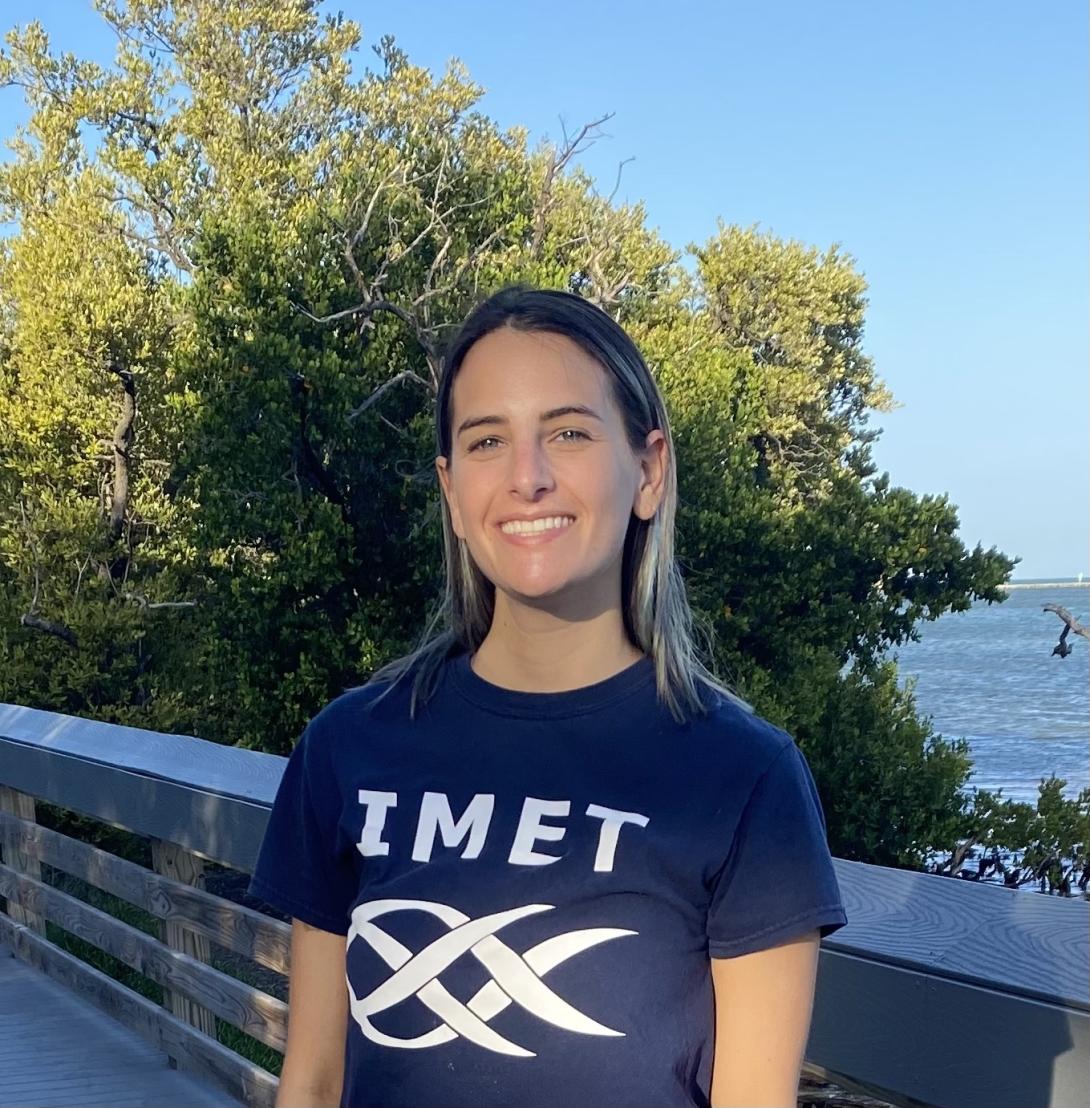IMET Fulbrighters: Dr. Yantao Li and Lauren Jonas
When you hear Fulbright what do you think? You may know exactly what a Fulbright Award is but in case you don’t, here’s the breakdown.
The Fulbright Program is an “academic exchange program sponsored by the US government”, created to better relations, increase understanding, and support the exchange of ideas. The Fulbright Program provides opportunities for students, scholars, and professionals to study, conduct research, and teach in countries around the globe. Only about 8,000 of these awards are given out each year, drawing from a pool of applicants coming from the United States and the other 160 countries who participate in the Fulbright Program. So, when we tell you that two of these awards have been granted to IMET personnel this year, we want you to know how amazing that really is. Only 8000 awards granted across more than 160 countries and TWO of these awards came from within IMET!
Dr. Yantao Li, Associate Professor

Dr. Yantao Li is an Associate Professor at the University of Maryland Center for Environmental Science. Dr. Li works out of IMET in Baltimore’s Inner Harbor, where he focuses on microalgal biology and biotechnology. Dr. Li’s laboratory explores the possibility of engineering algae for biofuel and other high-value products such as carotenoids. In addition, Dr. Li is exploring the possibility of using microalgae to reduce the amount of harmful emissions
released into our atmosphere.
We are thrilled to share that Dr. Li has been awarded a Fulbright Fellowship to support his research sabbatical in the lab of Professor Jian Chu at Nanyang Technological University in Singapore. Nanyang Technological Institute (NTU) is one of the world’s top universities, leading the way in fields like engineering, nanotechnology, and energy.
During his half-year stay, Dr. Li will be working with Dr. Jian Chu. Dr. Chu is one of the leading researchers working in the area of bio-cementation. Bio-cementation is a method of creating building materials for construction using calcium carbonate produced by microorganisms. To put it simply, bio-cementation is the creation of a “greener”, more environmentally friendly, version of cement. Dr. Li and Dr. Chu will be combining their research to explore the possibility of using microalgae to capture carbon dioxide and utilize it to produce calcium carbonate, or “biocement”.
This process could result in numerous environmental benefits. Using microalgae to create biocement could contribute to the permanent removal of excess carbon dioxide from our atmosphere. While the microalgae would be working to rectify preexisting environmental damage, the substitution of conventional cement for biocement would work to prevent further damage. The production of conventional cement releases a significant amount of carbon dioxide into our atmosphere each year. If this process were to be replaced by Dr. Li and Dr. Chu’s microalgal-based solution, global carbon dioxide emissions could decrease by 8%.
Congratulations to Fulbright Scholar, Dr. Yantao Li. We look forward to following along with the growth of this research and collaboration. Good luck and safe travels!
Lauren Jonas, PhD Student

Lauren Jonas is a PhD Student in the MEES Program at the University of Maryland Center for Environmental Science. Lauren conducts her research in the laboratory of Dr. Russell Hill at IMET, where she studies bioremediation, or the use of living organisms to remove pollutants from the environment. Lauren’s research focuses on the use of microorganisms to “scrub” carbon dioxide (CO2) from fossil fuel smoke. CO2 scrubbing is a method used to capture carbon dioxide after a fossil fuel is burned, but before it is released into the atmosphere.
Lauren has received a Fulbright US Student Grant for research in the laboratory of Dr. Diego Javier Jiménez at the University of the Andes in Bogotá, Colombia. During her time in Colombia, Lauren will be working on her project entitled, “Finding Enzymes in Microbes Capable of Scrubbing CO2 from Fossil Fuel Smoke in Bogotá.”
Dr. Jiménez’s research focuses on the ways microorganisms can breakdown bonds in carbon-based molecules, making this an incredible learning and collaboration opportunity for Lauren. While in Colombia, Lauren will work on determining which bacteria produce a particular enzyme, urease, and if this plays a role in the sequestration of carbon dioxide. In 2020, the US Energy Information Administration reported that the burning of fossil fuels accounted for 92% of the total US anthropogenic CO2 emissions. This statistic alone shows us how important Lauren and Dr. Jiménez’s research is. The excess carbon dioxide in the atmosphere is trapping in heat, leading to increasing temperatures and climate change. If we can find a natural and effective method of reducing CO2 emissions, we could decrease the rate of climate change, preserving ecosystems and life around the world.
We are incredibly impressed by Lauren and excited for this next stage in her education and career! Good luck and safe travels!
Works Cited
EIA. (2020, August 11). Where greenhouse gases come from - U.S. Energy Information Administration (EIA). Eia.gov. https://www.eia.gov/energyexplained/energy-and-the-environment/where-greenhouse-gases-come-from.php
How CO2 Scrubbing Works. (2008, July 28). HowStuffWorks. https://science.howstuffworks.com/environmental/green-science/co2-scrubbing.htm
Iqbal, D. M., Wong, L. S., & Kong, S. Y. (2021, April 23). Bio-cementation in construction materials: A Review. Materials (Basel, Switzerland). Retrieved June 30, 2022, from https://www.ncbi.nlm.nih.gov/pmc/articles/PMC8123012/
Nanyang Technological University. (2020). @USNews. https://www.usnews.com/education/best-global-universities/nanyang-technological-university-503366
U.S. Department of State. (n.d.). Fulbright Program Overview | Bureau of Educational and Cultural Affairs. U.S. Department of State. Retrieved June 30, 2022, from https://eca.state.gov/fulbright/about-fulbright/fulbright-program-overview